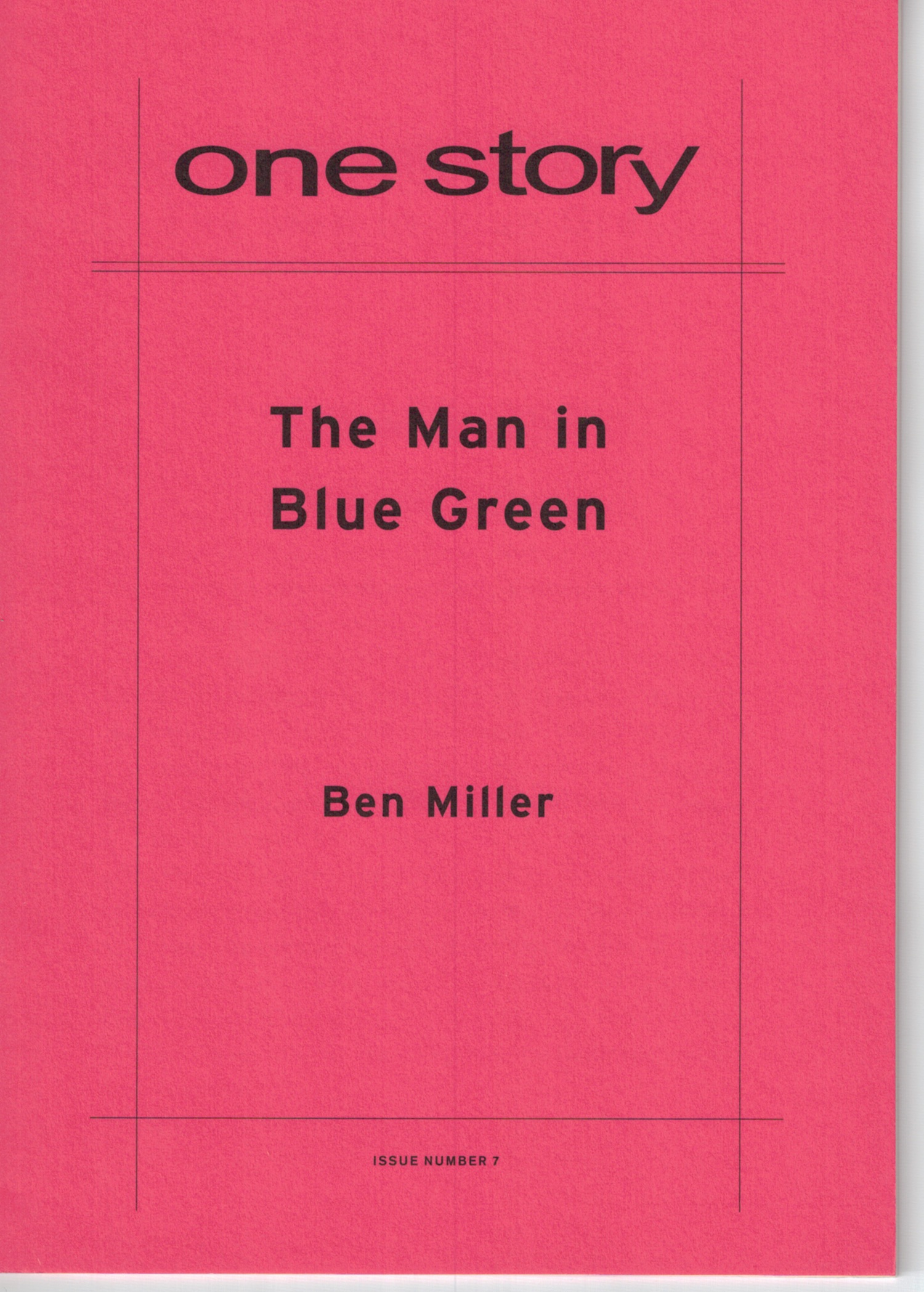
The Man in Blue Green
$2.50
Sold out
Excerpt
The officer in the ill-washed uniform forgets what my rights are and tries to fake the arrest, mumbling gibberish, straddling the bike path in a John Wayne way. Over his quivering shoulder the George Washington Bridge is visible—a silver arc all the way to the brown of New Jersey. The sky is colored with para-sailors participating in an Olympic trial. The Hudson pitching with info-barges and the path jiggling with joggers that grunt and gasp as they pound past, shoes leaking gel.
Ben Miller
Ben Miller’s prose can be found in recent or forthcoming issues of The Kenyon Review, Agni, Salmagundi, The Yale Review, The Antioch Review, Raritan and Gulf Coast. His nonfiction has also been included in the Best American Essays anthology. The recipient of a creative writing fellowship from the National Endowment for the Arts, he lives in New York City with his wife.
“The Man in Blue Green” is part of a recently completed novel set in a sixth New York City borough called the Dronx, a decrepit purgatorial refuge for citizens who have failed to succeed in other boroughs. The book—consisting of interlocking stories, monologues, essays, and twenty-five line drawings by the artist Dale Williams—provides a panoramic view of a shadowland inhabited by residents struggling to recreate themselves amid history’s vast wreckage. Numerous visuals from Meanwhile, in the Dronx… will be on display at the reading, and every attendee will receive their own map and skeleton key to New York’s newest borough.
Q&A by Hannah Tinti
- HT: Where did the idea for this story come from?
- BM: One afternoon while walking down Ninth Avenue I caught a glimpse of a policeman clad in a uniform that, while not blue green, was quite faded in places. His shirt looked like the shirts I laundered in college and made me wonder: Had this officer, for some reason, washed his own uniform?
- HT: What was the most challenging aspect of writing this story?
- BM: The Man in Blue Green is a very strong personality and in early drafts, he completely dominated, crowding out all other characters. Putting Blue Green in his place was no mean feat, requiring strong arm editing tactics (i.e. delete key). In the end, of course, the story does belong to him. But he needed a worthy adversary like the ex-husband and once that foil emerged, the story became much more interesting... Then there was the ordeal of counting Blue Green’s children. Even rudimentary forms of math challenge me and I came up with three or four different totals until finally becoming convinced 68 was correct. Which it may not be.
- HT: Why did you set it in futuristic New York?
- BM: “Futuristic” might be one word to describe this version of New York, but I don’t believe there is anything in the landscape I’ve created that couldn’t—or doesn’t—exist at the present moment. Life outpaces fiction, not the other way around. No matter what you write, it’s already happened or probably will soon happen, somewhere in the world. The city I’ve invented is designed to encompass the great joys and terrors of existence, a wide variety of human endeavors—dubious and admirable.
- HT: How long did it take you to complete this story?
- BM: I started this piece about two years ago and revised up until the moment I licked the envelope containing the galley.
- HT: What are you working on now?
- BM: This story is part of a recently completed cycle of stories set in various New York City boroughs. That book serves as a companion volume to novel-in-progress in which many of the locales and characters in the collection reappear, including The Man in Blue Green. I also continue to work on a numbered series of texts I’ve been compiling since 1993. These pieces often combine elements of various genres, say a poem with essay elements or an essay that evolves into fiction. At the moment I’m culling material for three manuscripts from the first 500 segments of the project, books to be titled, respectively: Poems of Mayhem, Madness & Murder; Tiny Tales of Mayhem, Madness & Murder; and Longer Tales of Mayhem, Madness & Murder.
- HT: What is the best bit of advice about writing you have ever received?
- BM: I always hesitate to pass along advice. How should I know what works for another person? The writing process is a such a personal and complex matter. That’s why it takes so long to make any real progress toward the creation of a solid body of work. You need to get to know yourself, something of the world, then find a way to decant the rush of thought and feeling into the slender necked vessel that is language. Sounds simple but there are many legitimate ways of achieving this end. I can tell you, however, the most valuable advice I’ve ever gotten was given to me by a third grade teacher regarding a completely unrelated subject: patience, patience, patience.